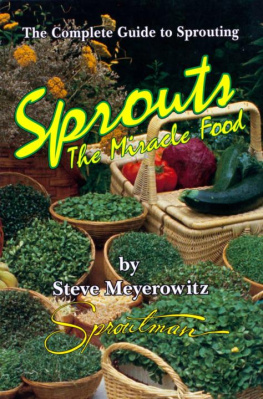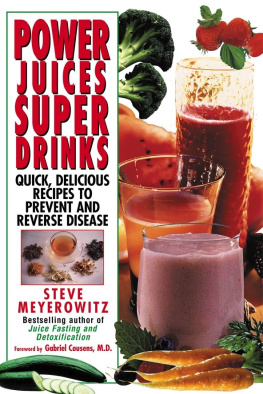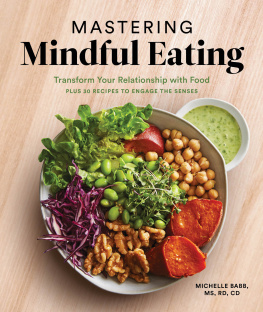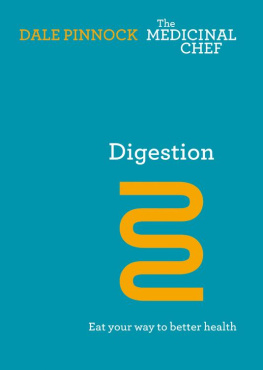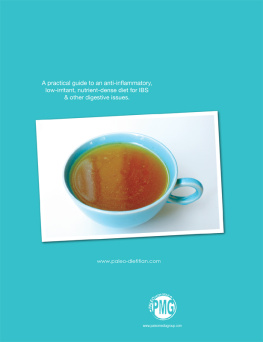Food
Combining
and
Digestion
Food
Combining
and
Digestion
101 Ways to Improve Digestion
by Steve Meyerowitz
Illustrations by Rick Meyerowitz

Copyright September, 2008 by Steve Meyerowitz
Original copyright 1987, 1989, 1990, 1991, 1993, 1996, 2002
by Steve Meyerowitz
PO Box 1100, Great Barrington, MA 01230
413-528-5200, Fax 413-528-5201.
Printed in the United States of America
ISBN #1-878736-77-9. Paperback
All rights reserved. No part may be reproduced by electronic,
photocopy, or other means without prior permission.
Library of Congress Cataloging-in-Publication Data
Meyerowitz, Steve.
Food combining & digestion : easy to follow techniques to increase stomach power and maximize digestion / by Steve Meyerowitz; illustrations by Rick Meyerowitz.
p. cm.
ISBN 1-878736-77-9
1. Food combining. I. Title: Food combining and digestion. II. Title.
RA784 .M483 2002
613.2dc21
2002011246
Cover Illustration and illustrations on p.14, 20 & 36 by Rick Meyerowitz.
Illustrations on p. 34 & 101 by Michael J. Parman.
Cover design by George Foster
Disclaimer: The information in this book is for educational purposes only. It is not medical advice, nor is it intended to replace the advice of your physician. Consult a licensed health professional for diagnosis and treatment of illness, for advice regarding medications, and before making changes to your diet or exercise program.
Distributed by
Book Publishing Company
PO Box 99, Summertown, TN 38483
888-260-8458. 931-964-3571. Fax 931-964-3518
Table of Contents
Introduction
True happiness is impossible without true health and true health is impossible without a rigid control of the palate.
Mahatma Gandhi
The Art of Food Combining
Food combining is the process of orchestrating our meals in such a way as to keep our stomachs sound and happy. No one likes a grumbling stomach and bad diet choices can absolutely ruin a good day. Gas, indigestion, distention, sour stomach, and acid reflux are all too common in modern society. Drugs to quell these complaints are among the best sellers in pharmacies.
Is It Art or Science?
Most of us think of food combining as a science governed by laws of chemistry. Protein digestion requires an acid medium, starch digestion requires alkaline enzymes, sugars like lactose require specific enzymes like lactase, and so forth. If good digestion was simply a matter of chemical combinations, we could satisfy the unanswered questions with a combining chart. Indeed, many people walk around with food combining charts in their pockets and whip them out in advance of every gulp. Although we respect the science behind food combining and abide by the chemistry involved, there are other, non-scientific, factors that play a more significant role in our effort to achieve optimum digestion.
When it comes to good digestion, everything matters. Lifestyle, emotions, attitude, timing, habits and environment all contribute to the art of food combining. The whole scenario of our daily lives figures into the efficiency of our stomachs. Digestion is not just getting food in and out. It is the absorption and assimilation of nutrients for the construction and repair of cells and the nourishment of the whole body. In one respect, this books plays the very pedestrian role of simply teaching proper eating habits. This involves not only what, where, how, when and why we eat, but also our consciousness during the process of nourishing ourselves.
Food encompasses our whole world, everything we do, everywhere we go, no matter what country or culture. Our social interactions revolve around questions of: Did you eat? What do you want to eat? Where shall we eat? When do you wish to eat? If we stop eating, the world becomes vastly different. Sadly, many people would experience how empty their lives are. Others may not know what to do with all the extra free time. Try fasting sometime and watch how the world changes.
Our bodies are endowed with miraculous equipment that can digest the worst chemical combinations as long as we do not overdo it. To achieve optimum digestion and good health, we need only to learn our limits and become more conscious of what we eat while we are eating it. Unfortunately, most of us spend so much time working that we forget our bodies and lose touch with what we put in them. Indigestion is a red flag. It tells us to slow down and watch what we are eating. We need to treat our stomachs like we would treat a baby. Be sensitive. Savor every biteeven every gulp of water! Dont worry about counting enzymes or vitamins. Our body chemistry is far too complex for our conscious minds to regulate. But we can make a difference by cultivating good eating habits and shunning bad ones. For starters, we need to eat less and our meals need to be less complex. Animals eat one food at a time. Let your goal be to simplify your meals. Eat consciously, judiciously and apply common sense. As Swami Digestananda says at the end of this book, most of all enjoy your food and be happy, then you will digest every bite.

The Laws of
Food Combining
The act of breaking down and digesting foods frees the forces inherent in them, forces related to the various complexes of organs. Material nutrients are thus transformed into forces that nourish the nervous system and the brain...Food is a support that can be made use of only to the degree that the individual spirit actively transforms it.
Rudolf Hauschka
You Are What You Eat
Laws? No. The human body does not operate like a government system with political laws. But, it is a system governed by physical laws. Like any system, when these laws or limitations are exceeded, problems occur. Most of the time, the penalties are not immediately evident. Just like when the federal budget is out of balance, we persevere, however blindly, thanks to deficit spending. The effects of violating this economic law will be borne largely by the next generation. The economy may suffer with depression, inflation, higher taxes, or unemployment. Someone will pay.
In the same way, you may violate the laws of your physical body and not pay until later in lifewith symptoms like irritable bowel, hypoglycemia, fibromyalgia, ulcers, arthritis, eczema, colon cancer, etc. Some of us pay right away in the form of stomach ache, headache, flatulence, diarrhea, or indigestion. But most of us walk around with minor problems like these for years and pay no attention to it. Since we dont know what to do about it, we decide it is an annoyance and ignore it. Some of us seek help, but if the doctors cant find anything, it continues to get ignored. Conventional medical doctors are good at finding acute problems, but have difficulty treating some of the above mentioned chronic complaints. Often, the answer can be found in watching what we eat and how we eat it.
Many problems are related to food in some way. Its true: we are what we eat. Even the medical profession is now beginning to recognize it. The National Cancer Institute is suggesting we all eat high fiber foods and increase our consumption of fresh fruits and vegetables. They recommend five fruit or vegetable servings every day. Whether you are 50 and have recently discovered an ulcer, or 5 and get a rash after eating citrus, there are certain digestive rules we must live by if we desire optimal health.
Next page

